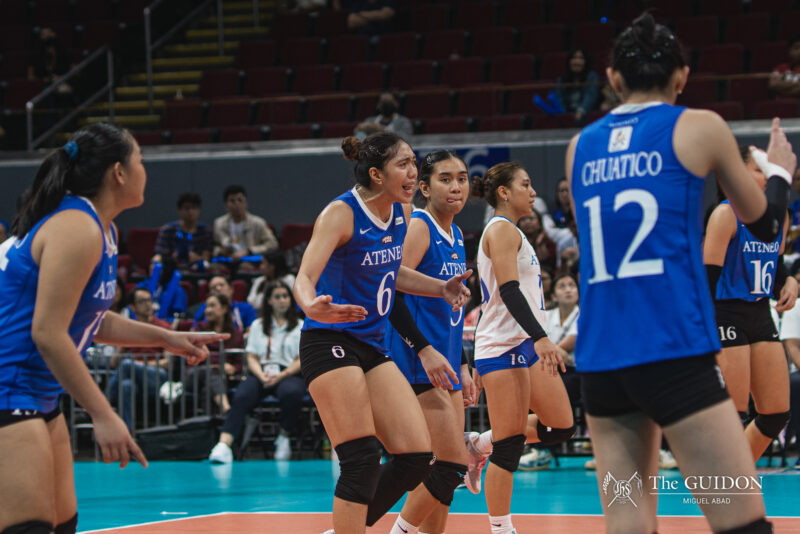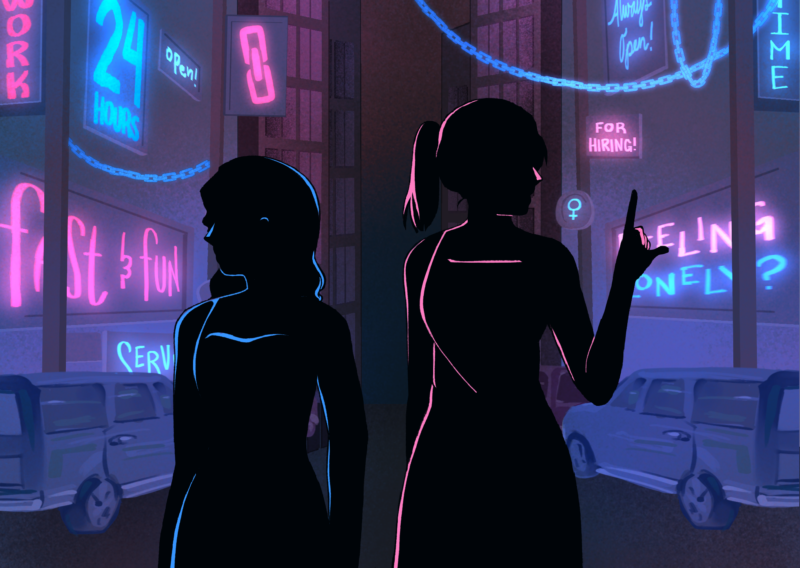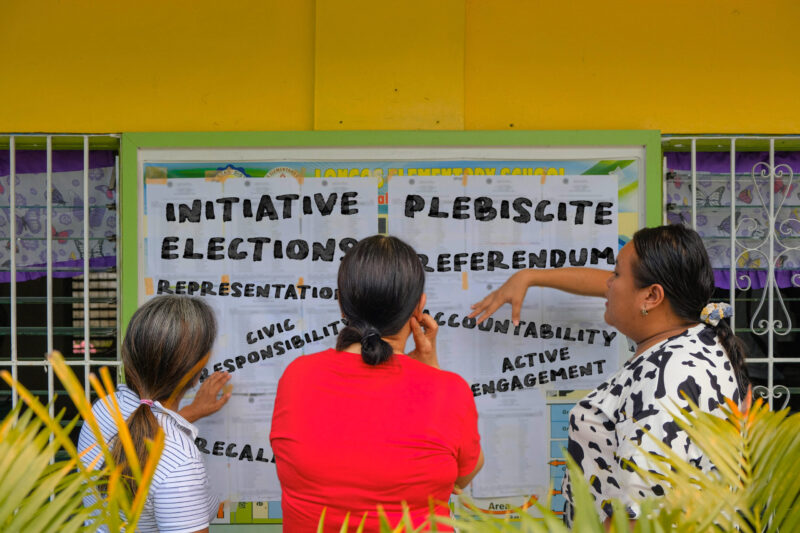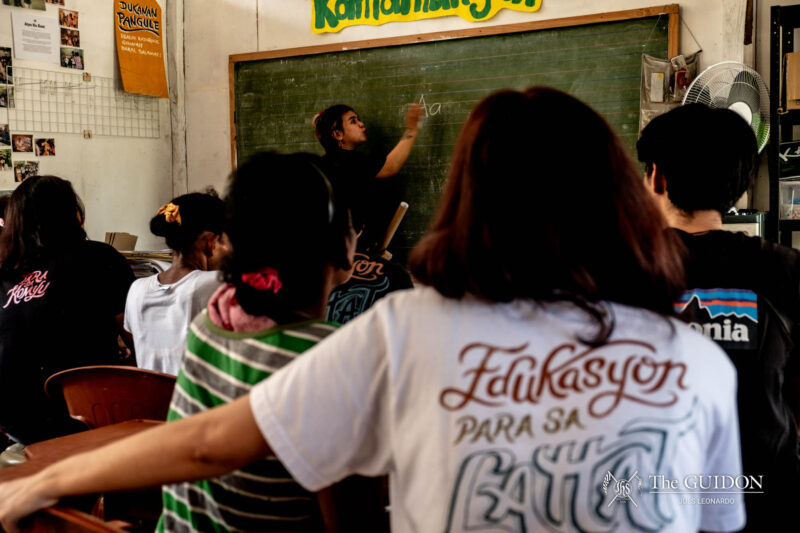Fast break plays, jaw-dropping 3-point shots and the occasional brawl between rivals just meters away. These are the exciting game moments spectators witness from their seats, or on their TV screens; but only a select few possess the privilege of knowing what really goes down on and off the court: the fresh-faced Atenean courtside reporters – Jessica Mendoza, Job de Leon, Stephie Sy and Rica Facundo.
“If you’re a basketball fan, this is awesome. You’re up close, you can see the reaction on their faces, and you hear the taunts they throw at each other that you [don’t] hear if you’re sitting anywhere else. It’s just very personal,” says Jessica Mendoza, veteran Ateneo de Manila courtside reporter.
The downside
More cruel than the camera’s unforgiving light, the thousands of people watching from their homes can be the most judgmental of critics. Constantly on their toes preparing their quarterly spiels, while also paying attention to the game, the pressure of being a courtside reporter can be quite difficult to manage.
Job de Leon, who is on his second year reporting for Adamson University, is wary of this. “The tiniest mistake, people are going to jump on it. Some people make fun of you, others start questioning, ‘Why is that guy even there?’ ” he shares.
“Every time you step up to the camera, you have to prove everybody wrong about what they think of you.”
Mendoza shares the sentiment, “People are very mean. You stumble over a couple of words and they’re going to talk about it on Pinoy Exchange. They’re going to say ‘Ay nako, she sucks!’ or ‘Bakit ganoon ang buhok niya? (Why is her hair like that?)’ Jessica says.
Indeed there is no denying the perks of being a courtside reporter, but behind the confident facade is hours of hard work invested. In the few minutes they are given to note down information from the teams’ coaching staff, reporters are tasked to deliver a rundown of game plays eloquently. It is not enough to simply tell the viewers what they need to know – a reporter’s delivery can make or break the audience’s perception of that particular courtside reporter’s competence.
Professionalism vs. School Spirit
Not being able to represent their alma mater, however, can make matters a little more daunting. “Going against your school, that’s the hard part. Parang your heart will be split in half,” shares Stephie Sy, who was assigned to Far Eastern University.
During games where Ateneo is pitted against the university assigned to them, openly rooting for Ateneo is not an option. As journalists, they are expected to uphold a certain level of objectivity – this means that whatever personal allegiances they have must be temporarily disregarded in the name of media ethics.
Rica Facundo, courtside reporter for Emilio Aguinaldo College in the NCAA recalls, “I remember when I auditioned, the ABS-CBN team said, whatever school you report for, it doesn’t matter; you’re there for ABS-CBN Sports.”
“Once lang yata ako nag-Song for Mary [during a UAAP game] (I only sang the Song for Mary once). I’m a journalist, basically, so I can’t do that. I can’t really show a lot of excitement for ADMU,” Job says. “We have to be professional about it.”
Stephie agrees: “We treat it as a job, because it is a job. I think that being professional is the mark of a true Atenean. Mahirap kung mahirap, pero ganoon talaga. (It’s hard, but that’s the way it is.)”
On the job training
Contrary to popular belief, one doesn’t necessarily have to be an avid fan of basketball to be a UAAP courtside reporter. These four Ateneans are a testament to that. Most of them acknowledged having little or no knowledge at all on the sport prior to becoming a courtside reporter, but learned to appreciate it as time went by.
“I admitted to ABS-CBN, ‘I don’t know anything, except when you shoot the ball it’s two points’,” Jessica recalls, going back to when she first auditioned in 2009.
Job, on the other hand, followed the NBA religiously but wasn’t very interested in the college leagues. “I just wanted to get the job. Now I find myself heavily invested in it,” he says.
Needless to say, being a courtside reporter gives these students a glimpse of the possibilities that await them after college. Like their more experienced counterparts, rookie reporters Rica and Stephie hope to pursue careers in broadcasting as well. The stint has allowed them to explore what they could do with the craft, and in the process, given them the opportunity to look beyond the game’s final score.
What’s in it for them?
In the end, the trials and scrutiny that courtside reporters face are worth it. The experiences and perks they gain make up for the negative publicity that may come with it.
Despite all these, this season’s Atenean courtside reporters are in agreement – the intangible experiences are the ultimate source of satisfaction from this dream job. Rica says, “The best thing is you’re really part of the game. It’s different courtside – it’s not one-sided anymore.”
“It becomes a sort of running human interest story – every game is a drama that you watch as it plays out,” Job finishes. The pressures can be demanding but the satisfaction in witnessing the team’s heart and soul is well worth it
*Editor’s Note: Rica Facundo and Job De Leon are members of The GUIDON.






